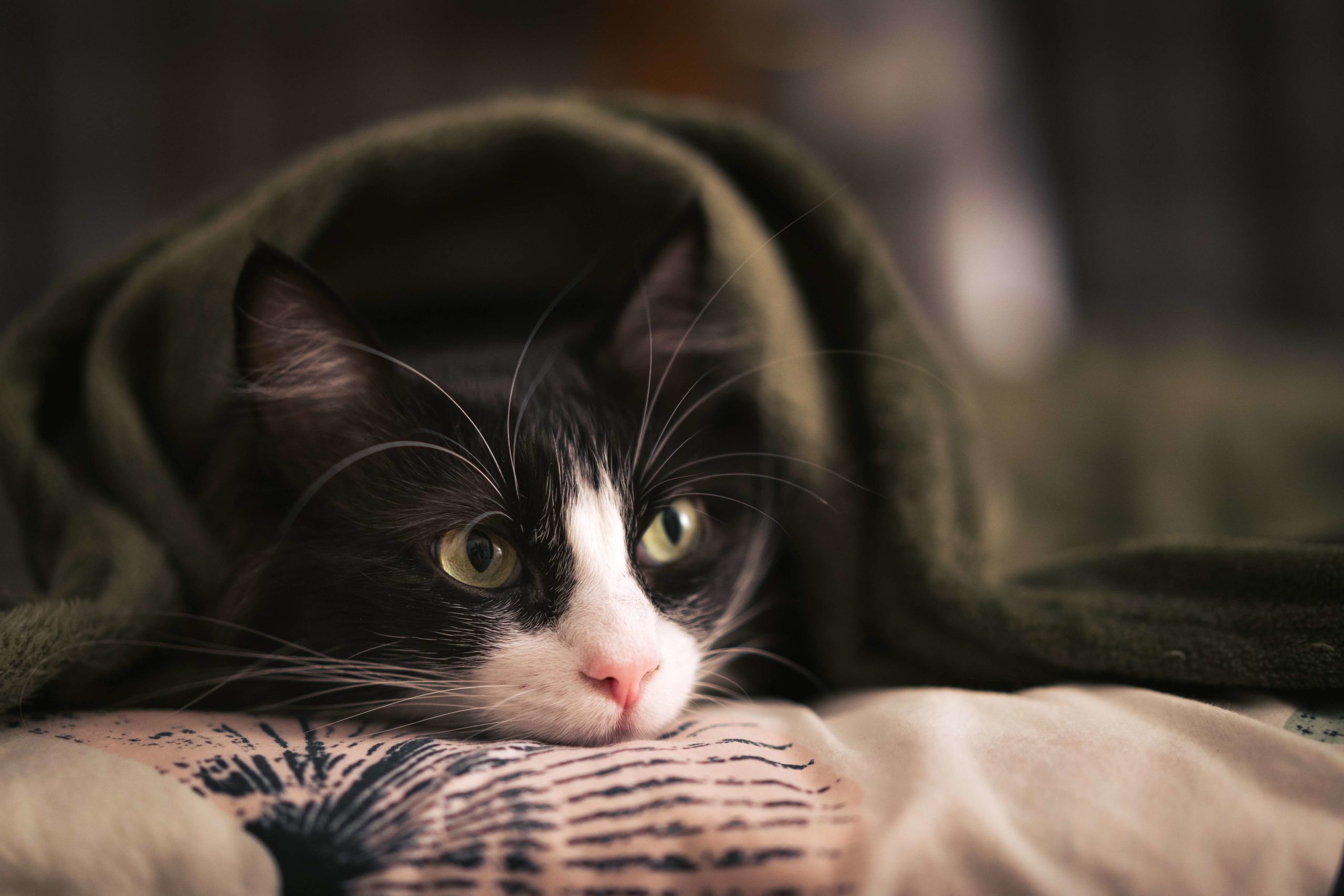Yes, cats can catch colds. In cats the condition of a cold is a Feline Upper Respiratory Infection.
Symptoms of Colds in Cats: How to Know Your Cat Caught a Cold
There are a few symptoms of colds in cats – generally speaking these are pretty similar to the symptoms you’d see in a person:
- Runny nose
- Sneezing & coughing
- A fever (this is typically mild)
- Congestion
- Open mouth breathing
- Loss of appetite
- Dehydration
Generally any time your cat is lethargic and not eating and drinking regularly that’s a sign to take them to your vet.
How Do Cats Catch Colds?
Cats catch colds in much the same way humans do, although cats can’t catch or pass a cold to a human. Feline Upper Respiratory Infection is viral and bacterial, and is commonly passed between cats through the droplets spread by sneezing.
For that reason, outdoor cats tend to be more susceptible to colds, as they have more contact with other cats.
What Can You Do When Your Cat Catches a Cold?
Cat colds or Feline Upper Respiratory Infection is typically not serious, but some can be and can lead to pneumonia. There are a few things to look for in determining if you should bring your cat to the vet:
- If your cat is senior, a puppy, or immuno-compromised you should contact a vet
- If your cat has shown no signs of improvement in 4 days you should contact a vet
- If discharge on your cats eyes is yellow, green or thick you should contact a vet
- If any of the above symptoms seem particularly severe you should contact a vet
Short of going to the vet, there are a few things you can do to make your cat feel better to help treat the cold (as you would with other illnesses like a sebaceous cyst):
- Use a humidifier or vaporizer to increase the humidity in your house
- Keep the heat high and add blankets to your cats resting spots to make sure your cat doesn’t get too cold
- For a stuffy nose use a clean damp cloth or some cotton balls soaked in warm water to gently wipe their nose.
- Your cat may lose taste or smell during a cold. You can warm up cat food or buy wet cat food to help your cat to eat.
- You can apply a saline solution with gauze pads to your cats eyes if they are red and inflamed and the discharge is clear
- If your cats eyes are red and inflamed and the discharge is clear you can cleanse and soothe your cat’s watery eyes by applying a saline solution with gauze pads. You should contact your vet if the discharge becomes yellow, green or thick.
You can learn more about cats & COVID in the infographic below, as well:
Add this infographic to your website:
Frequently Asked Questions About Cat Colds
A typical cat cold will go away on its in around 4 days. If your cat’s cold doesn’t, you should consult a vet.
Typically cats catch colds from a virus and other cats, but if your cat has gotten sick with no exposure to other cats, it may also be bacteria that caused your cat’s cold.
Typically around 4 days.
The following symptoms may be exhibited by cats sick with COVID-19:
- Fever
- Coughing
- Difficulty breathing or shortness of breath
- Lethargy (unusual lack of energy or sluggishness)
- Sneezing
- Runny nose
- Eye discharge
- Vomiting
- Diarrhea
No, cats typically can not pass colds to humans.
If your cat is having other health issues, you may find our guide to what to do if your cat has blood in its stool, home remedies for a cat vomiting, and home remedies for a cat’s upset stomach.


